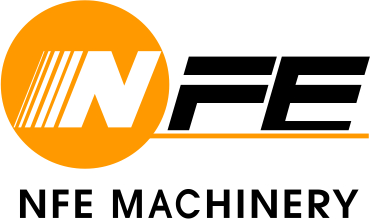
Crafting Perfection: Introducing the 5BBL Brewing System
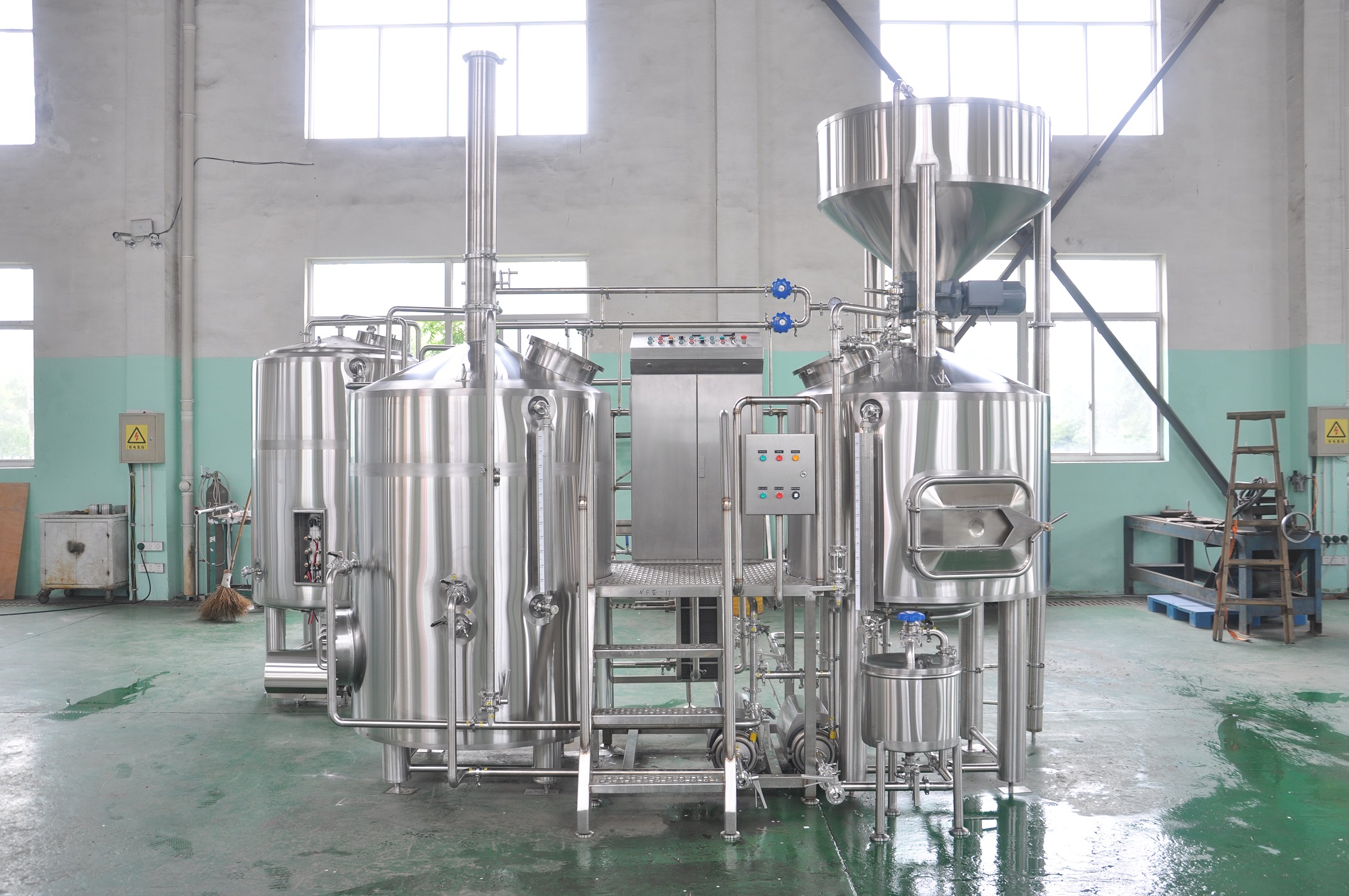
The 5BBL Brewing System, therefore, represents a brewing system with a capacity of 5 barrels or 155 gallons (approximately 585 liters). This system is often used by small to medium-sized breweries or brewpubs to produce a moderate amount of beer per batch.
Components of 5bbl brewhouse
A 5BBL brewhouse typically consists of several key components that work together to facilitate the brewing process. Here are the common components you can expect to find in a 5BBL brewhouse:
Mash/Lauter Tun: This vessel is used for mashing the grains with hot water to extract fermentable sugars. It typically includes a false bottom or a filter system to separate the liquid wort from the grain solids.
Brew Kettle: Also known as the boiling kettle, this vessel is used for boiling the wort and adding hops. It often features an external heating source, such as steam jackets or direct fire or electric heating elements, to bring the wort to a boil. The kettle may have a tangential inlet for whirlpooling, a process that helps separate hop particles and coagulated proteins from the wort.
Hot Liquor Tank (HLT): The HLT is used to store and heat the hot water needed for various brewing processes, including mashing, sparging, and cleaning. It supplies hot water to the mash tun and other parts of the brewhouse.
Wort Pump: A pump is used to transfer the wort between vessels, such as from the mash tun to the brew kettle or from the brew kettle to the fermenter. Pumps help maintain a consistent flow rate and prevent the wort from getting stuck or causing blockages.
Wort Grant: The wort grant is an optional component used to collect and temporarily hold the wort during lautering before transferring it to the brew kettle. It helps to stabilize the flow and regulate the wort transfer.
Fermentation Tanks: These tanks are used to hold the wort during fermentation. The size and number of fermentation tanks will depend on the brewery’s production needs. They often include cooling jackets to control the fermentation temperature.
Conditioning Tanks/Bright Beer Tanks: After fermentation, the beer is transferred to conditioning tanks for further maturation, carbonation, and clarification. These tanks may have additional features like carbonation stones or sight glasses.
Glycol Chiller: A glycol chiller is employed to maintain the desired temperature of the fermenters. It circulates chilled glycol through a heat exchanger or cooling jackets on the tanks, helping regulate the fermentation process and control yeast activity.
Control System: A brewhouse control panel is used to monitor and regulate various parameters such as temperature, pressure, and timing. It allows the brewer to control the brewing process and make adjustments as necessary.
Piping and Valves: An extensive network of pipes and valves connects the various vessels and components within the brewhouse. These allow for the movement of liquids, control of flow rates, and adjustment of pressures during brewing operations.
Heat Exchanger: A heat exchanger is used to cool down the wort quickly after boiling, bringing it to the desired temperature for fermentation. It typically uses cold water or glycol to exchange heat with the hot wort.
Wort Oxygenation System: To ensure healthy fermentation, some brewhouses have a wort oxygenation system. This system introduces oxygen to the wort before fermentation, helping yeast to reproduce and ferment efficiently.
Cleaning and CIP System: A brewhouse requires thorough cleaning and sanitation. A CIP system consists of pumps, hoses, and tanks dedicated to the automated cleaning process. It helps maintain hygiene and prevents contamination.
These are the fundamental components you would find in a 5BBL brewhouse. However, breweries may have additional equipment based on their specific needs, such as a grain mill, grist case, yeast propagation system, filtration system, or additional storage vessels.
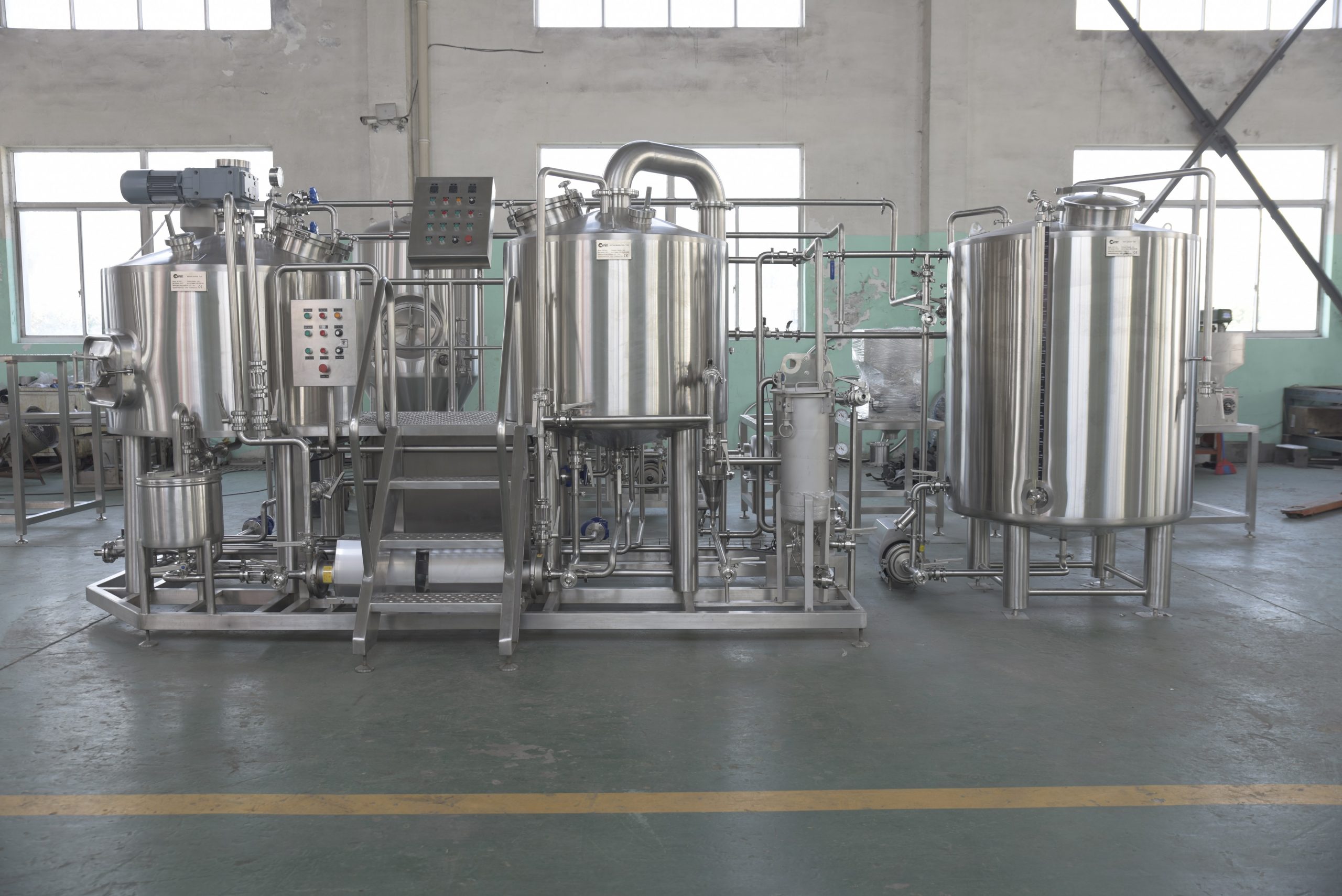
Benefits of a 5bbl brewing system
A 5BBL brewing system offers several benefits for breweries of a certain size and production scale. Here are some advantages of using a 5BBL brewing system:
Flexibility: A 5BBL system provides a middle ground between smaller homebrewing setups and larger commercial brewing systems. It offers greater flexibility and control over the brewing process compared to smaller systems while being more manageable and cost-effective than larger systems.
Production Volume: The 5BBL brewing system allows for a moderate production volume per batch, making it suitable for small to medium-sized breweries or brewpubs. It provides the capacity to produce a significant amount of beer while maintaining a manageable scale of operations.
Experimentation and Variety: With a 5BBL system, brewers have the opportunity to experiment with different recipes, ingredients, and brewing techniques. It enables them to create a diverse range of beer styles and flavors, catering to the evolving tastes and preferences of their customers.
Quality Control: A smaller brewing system like the 5BBL allows brewers to closely monitor and control the brewing process, resulting in better quality control. It facilitates hands-on management of temperature, ingredients, and other parameters, ensuring consistency and high-quality beer production.
Local Market Focus: The 5BBL brewing system is well-suited for breweries targeting a local or regional market. It allows them to produce beer in quantities that cater to the demand within their specific area, fostering a strong connection with the local community.
Cost-Effective: Compared to larger brewing systems, a 5BBL system generally requires a lower upfront investment, making it more accessible to small business owners and entrepreneurs entering the craft beer industry. It also reduces ongoing operational costs, such as raw material requirements and energy consumption.
Scalability: The 5BBL brewing system offers room for growth and scalability. Breweries can start with a 5BBL system and gradually expand their production capacity by adding more fermentation tanks or upgrading to a larger brewing system as demand increases.
Craftsmanship and Artistry: The smaller scale of a 5BBL brewing system allows brewers to focus on the craft and artistry of brewing. It encourages hands-on involvement in the brewing process, fostering a sense of creativity and craftsmanship in creating unique and high-quality beers.
Overall, the 5BBL brewing system strikes a balance between production capacity, flexibility, quality control, and cost-effectiveness, making it an attractive choice for small to medium-sized breweries looking to establish themselves in the craft beer market.
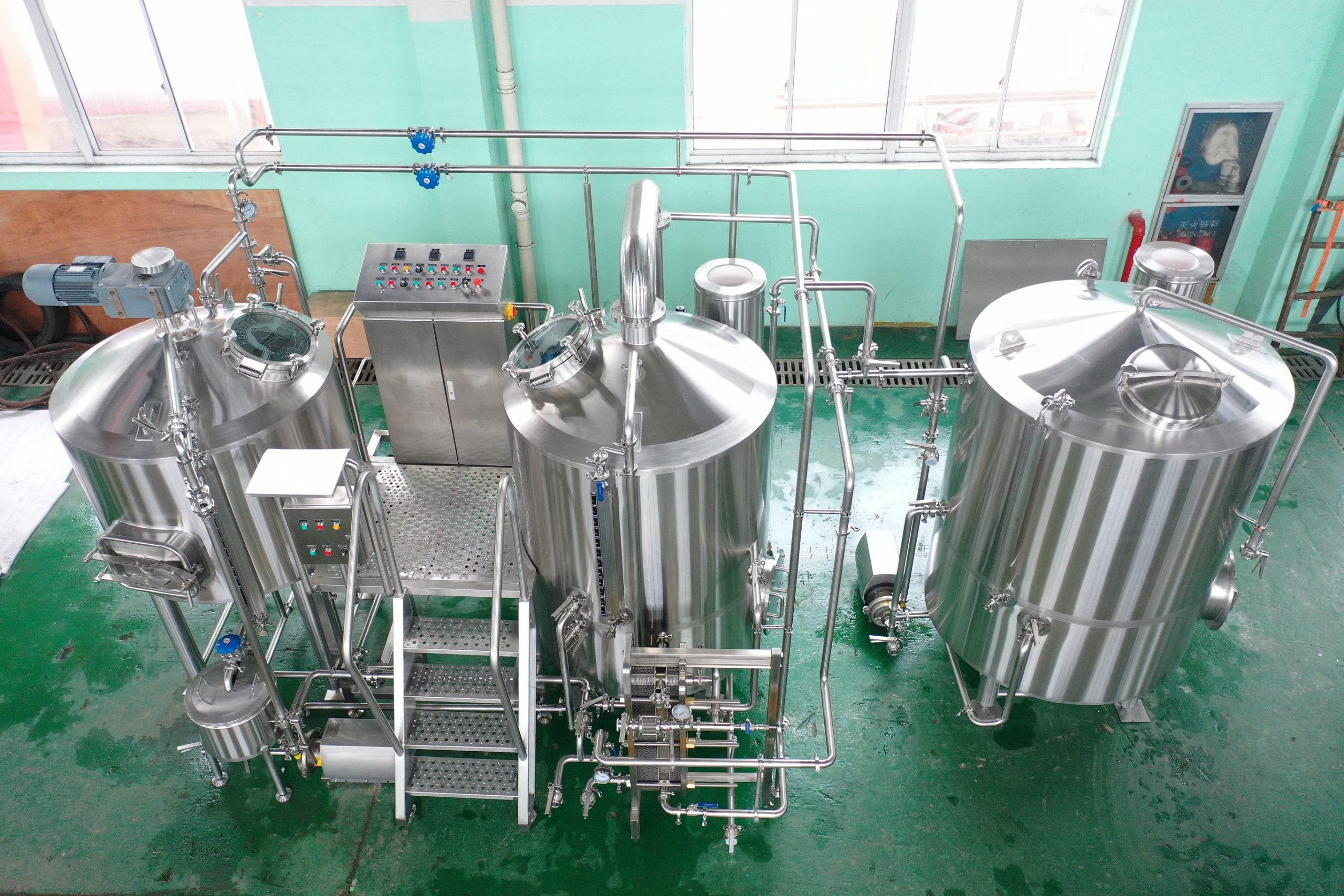
5bbl brewhouse cost
The cost of a 5BBL brewhouse can vary significantly depending on various factors such as the brand, quality, country of manufacture, customization, additional features, and the complexity of the system. Generally, a complete 5BBL brewhouse system can range from $60,000 to $80,000 or more. Here’s a breakdown of the typical cost distribution:
Brewhouse Equipment: The core components of the brewhouse, including the mash/lauter tun, brew kettle/whirlpool tank, hot liquor tank (HLT), heat exchanger, pumps, valves, control panel, and other necessary vessels and equipment, can cost between $35,000 and $38,000.
Fermentation and Conditioning Tanks: The cost of fermentation and conditioning tanks can vary based on the number of tanks, their size, material, additional features (such as temperature control), and the brand. Generally, the cost can range from $4,000 to $4,300 per tank or more, depending on the specifications.
Installation and Setup: Depending on the complexity of the brewhouse and the facility requirements, installation and setup costs can vary. This may include plumbing, electrical work, ventilation, flooring, and other necessary infrastructure. NFE will be responsible for the installation and debugging the equipment for free, and the buyer only be responsible for round-trip air tickets and supply the accommodation and food for our installation engineer, and there is no other fees.
Auxiliary Equipment: Additional equipment such as grain mills, yeast propagation systems, glycol chillers, kegging and packaging equipment, and cleaning systems should also be considered. The cost for these auxiliary components can vary widely depending on the specific requirements of the brewery, and may range from $10,000 to $15,000 or more.
Shipping and Import Costs: These costs will be depending on which sea port shall we delivery to, but we won’t make any profit from this shipping cost, of course, you also can inquiry this cost with your local shipping agent.
It’s important to note that the above cost estimates are approximate and can vary significantly based on factors mentioned earlier. It’s advisable for breweries to reach out to equipment manufacturers or suppliers for detailed quotes and to consider factors like warranties, customer support, and equipment durability when making purchasing decisions.
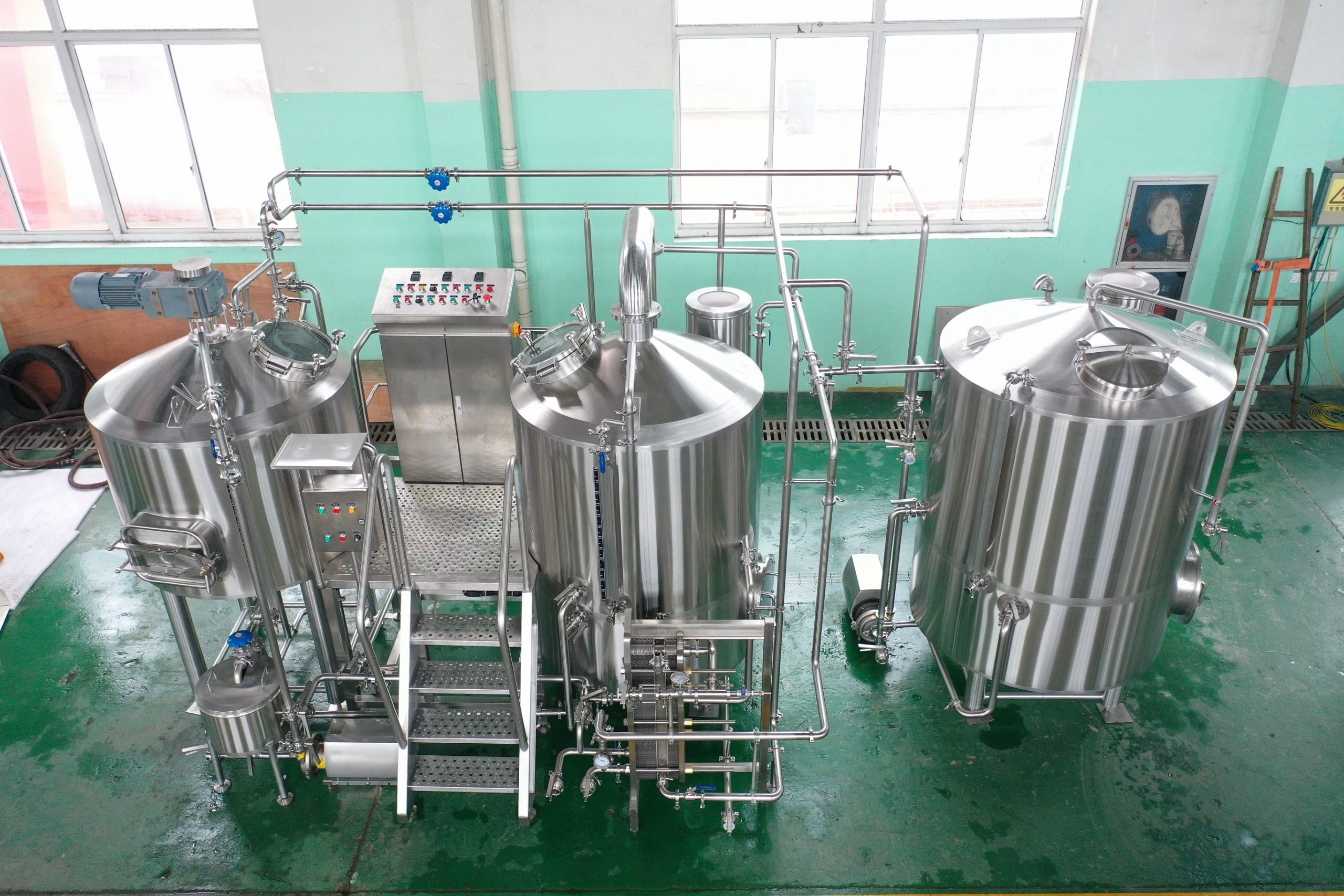
How doese a 5bbl brewing system working?
A 5-barrel (bbl) brewing system is a relatively small-scale commercial brewing setup commonly used by craft breweries and brewpubs. Here’s a general overview of how a 5-bbl brewing system typically works:
Mash Tun: The brewing process begins by mixing milled grains with hot water in the mash tun. This mixture forms a mash, and enzymes break down the starches in the grains into fermentable sugars. The mash tun is equipped with temperature controls to maintain specific temperature ranges for enzyme activity.
Lauter Tun: After the mashing process is complete, the liquid part of the mash, known as wort, is separated from the solid grain material in the lauter tun. This separation is achieved by recirculating the wort through a perforated false bottom, allowing the liquid to pass through while retaining the grain bed.
Brew Kettle: The wort collected from the lauter tun is transferred to the brew kettle. Here, it is brought to a boil, and hops are added at different stages to impart bitterness, flavor, and aroma to the beer. The boiling process also helps sanitize the wort and coagulate proteins for clarity.
Whirlpool: After boiling, the wort is transferred to the whirlpool vessel. The whirlpool vessel utilizes centrifugal force to separate the hop and trub (sediment) particles from the wort. The whirlpool vessel has a conical bottom that facilitates the collection of the cleared wort.
Fermentation: The clarified wort is transferred to a fermentation vessel, typically a conical fermenter. Yeast is added to the vessel, and fermentation begins. The yeast consumes the sugars in the wort, producing alcohol and carbon dioxide. Temperature control is crucial during fermentation to achieve desired flavors and ensure yeast activity.
Conditioning: Once primary fermentation is complete, the beer undergoes a conditioning phase to allow flavors to mellow and the yeast to settle. This process may take several weeks or even months, depending on the beer style.
Carbonation and Packaging: After conditioning, the beer is carbonated. Carbonation can be achieved through natural carbonation in the vessel or by introducing carbon dioxide during packaging. The beer is then transferred to kegs, bottles, or cans for distribution and consumption.
It’s important to note that brewing systems can vary in design and configuration, but this overview provides a general understanding of the process involved in a 5-bbl brewing system.
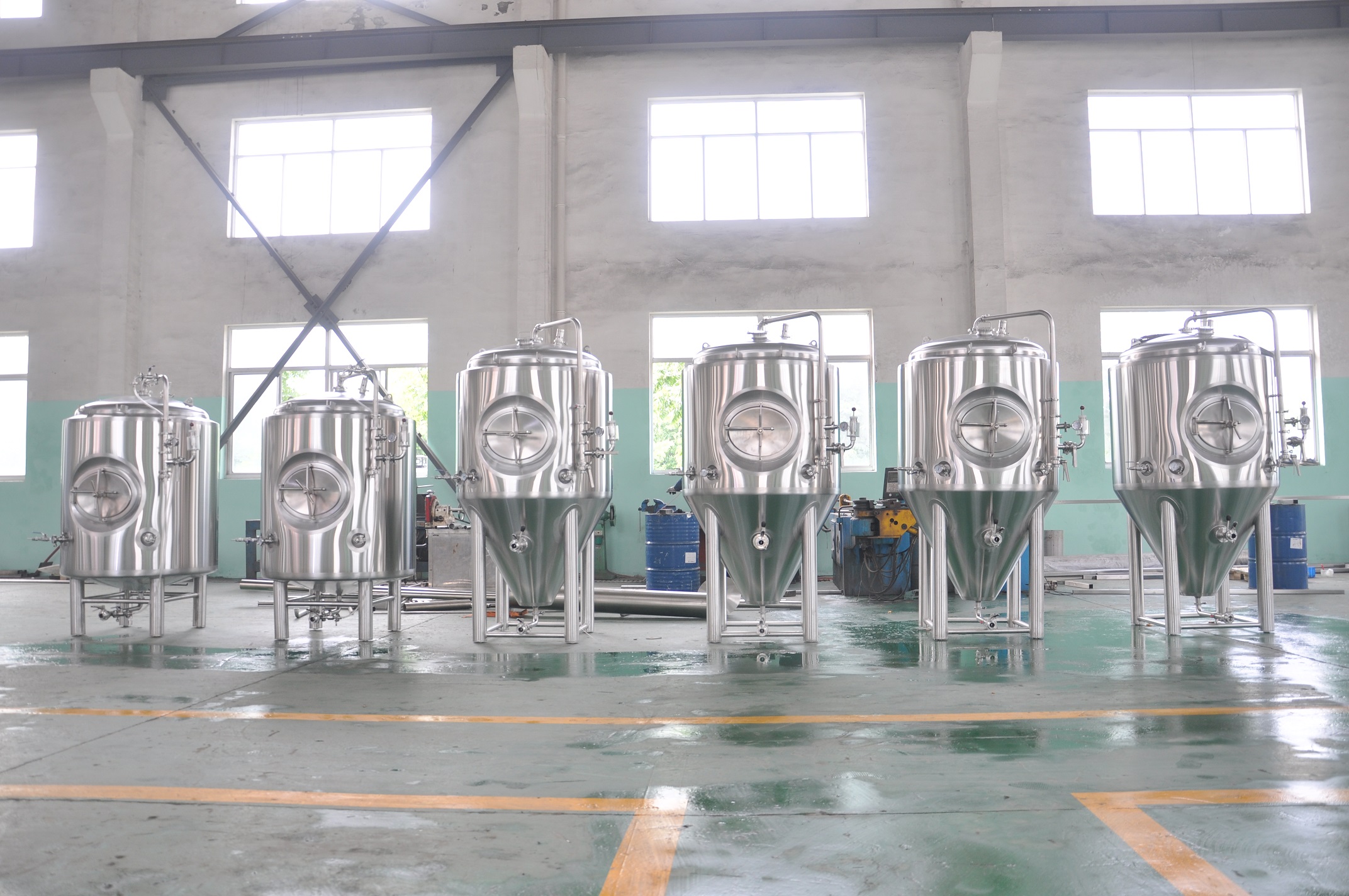
Tips for operating 5bbl brewing system
Operating a 5-barrel (bbl) brewing system requires attention to detail and a good understanding of the brewing process. Here are some tips to help you operate your 5-bbl brewing system effectively:
Familiarize Yourself with the Equipment: Take the time to thoroughly understand your brewing system, including all the components, controls, and safety features.
Maintain Proper Cleaning and Sanitation: Cleanliness is crucial in brewing. Clean and sanitize all equipment, including fermentation vessels, hoses, and pumps, to prevent contamination and off-flavors in your beer. Follow strict cleaning and sanitation protocols.
Plan and Document Your Recipes: Have a standardized recipe format and document your brewing process in detail. This will help you replicate successful batches and troubleshoot any issues that arise. Keep a record of ingredients, measurements, timings, and any adjustments made during the brewing process.
Water Quality: Water plays a significant role in brewing. Test and analyze your water to understand its mineral composition. Adjusting the water profile to match the style of beer you are brewing can greatly enhance the flavor and character of your beer.
Mash Process: Pay close attention to your mash process. Maintain accurate temperatures and allow enough time for enzymes to convert starches to sugars. Stir the mash to avoid hot spots and ensure even conversion. Vorlauf (recirculate) the wort to achieve clarity before transferring it to the boil kettle.
Boiling and Hops Addition: When boiling the wort, control the heat to avoid boil-overs. Add hops according to your recipe and desired bitterness levels. Use a timer to keep track of the boiling time and follow your hop schedule accurately.
Equipment maintenance: Regularly inspect and maintain your brewing equipment. Cleanliness is crucial for producing quality beer, so ensure that all components, such as fermenters, mash tuns, and pumps, are properly cleaned and sanitized after each use.
Fermentation Temperature Control: Maintain consistent and appropriate fermentation temperatures for the yeast strain you’re using. Install a reliable temperature control system to ensure the yeast works optimally, producing desirable flavors and aromas while minimizing off-flavors.
Yeast Management: Proper yeast handling is essential. Follow best practices for yeast propagation, pitching rates, and aeration/oxygenation. Maintain a healthy yeast bank or work with a reputable yeast supplier to ensure the quality of your yeast.
Record and Monitor: Keep detailed records of each batch, including fermentation temperatures, gravity readings, and any deviations or observations. Regularly monitor fermentation progress, taste samples, and measure gravity to ensure the beer is fermenting as expected.
Quality Control and Packaging: Implement quality control measures to ensure your beer meets your standards. Perform sensory evaluations, lab tests, and quality checks to detect any issues. When packaging, use appropriate techniques and equipment to minimize oxygen exposure and maintain beer quality.
Remember, brewing is both an art and a science, and it takes time and practice to master the process. Stay curious, continuously learn, and be open to experimenting and refining your techniques.
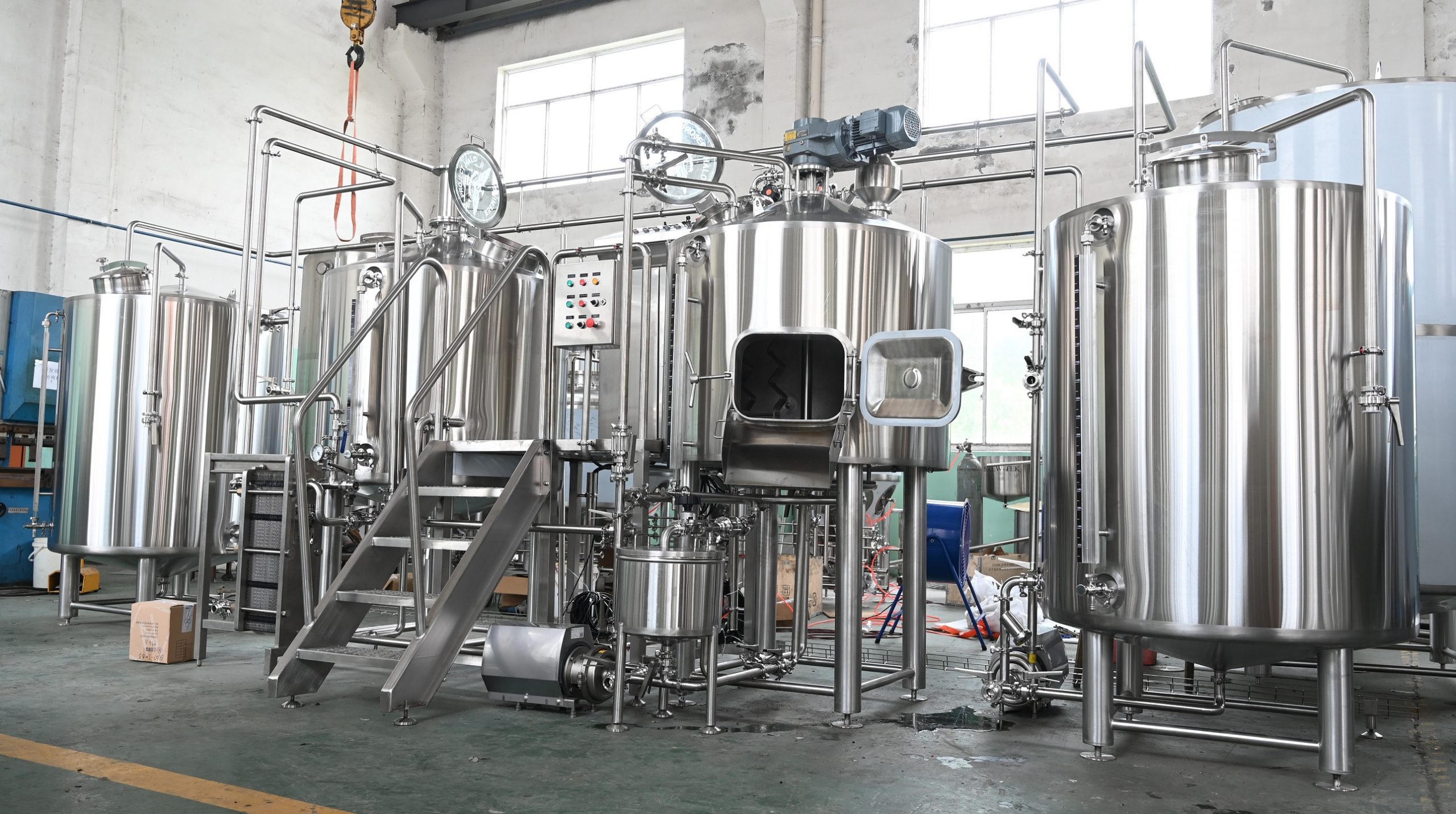
A 5bbl brewing system is a popular size for small craft breweries or brewpubs that produce beer for local consumption. Understanding the components and brewing process of a 5 barrel brewing system can help you make the most out of your equipment and create unique and high-quality beer for your customers.
Thank you for reading this article about 5bbl brewing system. If you’re looking for a high-quality, durable, and easy-to-use beer brewing system, we recommend the brewing equipment brand NFE Machinery company, NFE brewing equipment has good reputation for overseas market, Selling equipment is only the beginning of cooperation between NFE and you. Our Real Purpose is to help you set up the brewery and we grow together!
